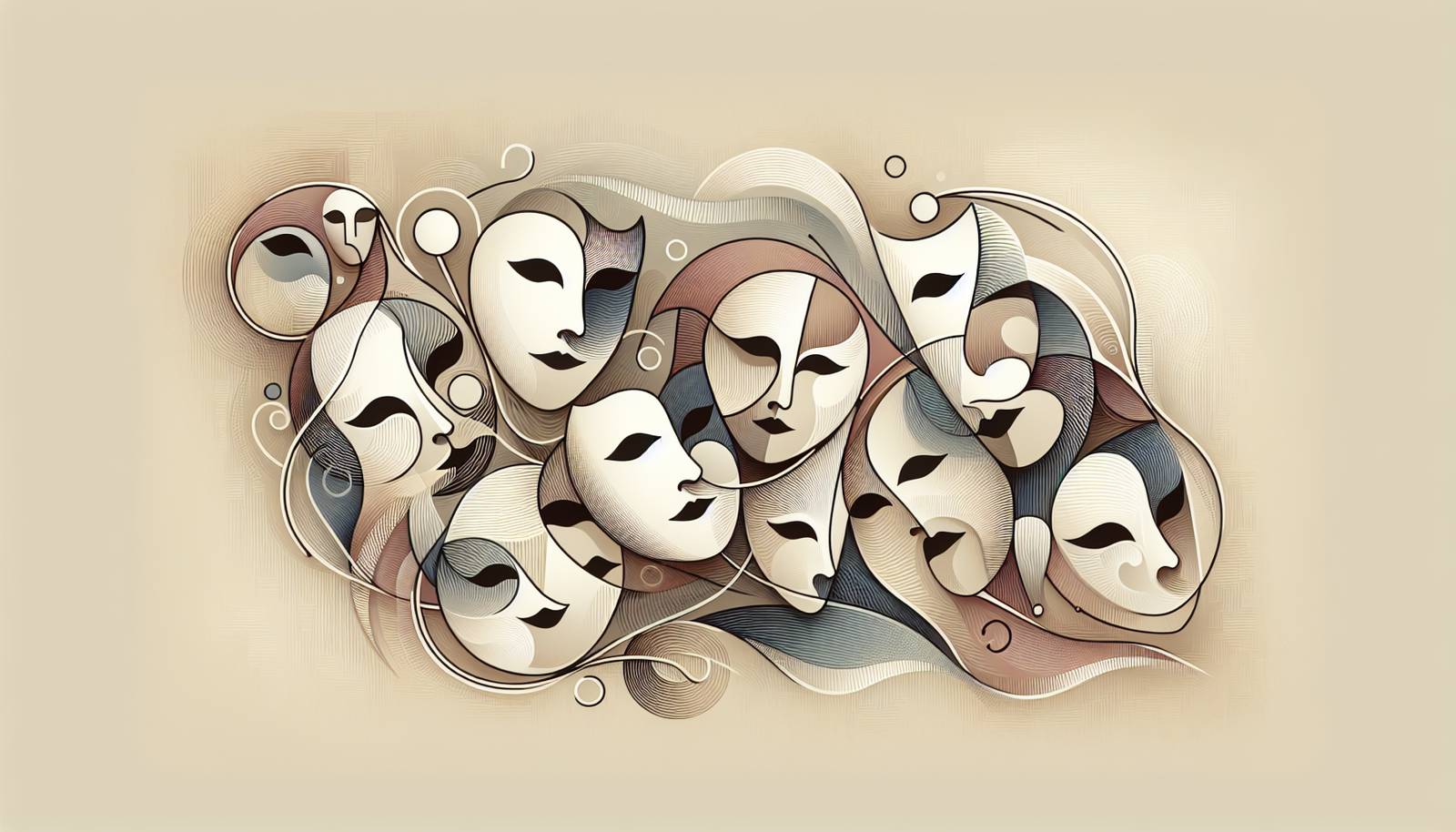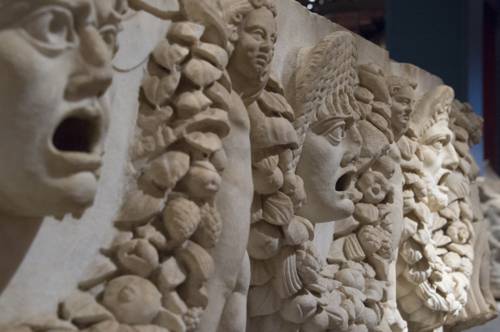
FAQ About The Role of Theatre Masks in Cross-Cultural Performances

What are theatre masks used for in performances?
Theatre masks are used to represent characters or convey emotions in performances. They can transform actors into animals, supernatural beings, or abstract concepts. By wearing masks, performers can transcend their identity, enabling exaggerated expressions and movements that enhance storytelling and audience engagement.

How do theatre masks contribute to cross-cultural storytelling?
Theatre masks play a pivotal role in cross-cultural storytelling by providing a universal language of expression. Cultural distinctions in mask design help convey specific character traits or societal norms, making it easier for audiences from different backgrounds to connect with and understand the performance's themes.

What cultures are known for using theatre masks traditionally?
Several cultures are renowned for their traditional use of theatre masks, including those of Japan (Noh theatre), Greece (classical theatre), Italy (Commedia dell'arte), and Africa (various ritualistic performances). Each culture has distinct stylistic features that reflect their traditions and societal values.

How do theatre masks change the way an actor performs?
When actors wear theatre masks, their reliance on facial expressions diminishes, prompting them to rely more on body language and movement. This shift often results in exaggerated physicality and helps in clearly expressing character intention and emotion, essential for engaging audiences, particularly in settings with linguistic diversity.

Can theatre masks influence audience perception?
Yes, theatre masks can significantly influence audience perception by simplifying complex emotions and cultural symbols into a visual format. Masks can evoke preconceived notions and cultural archetypes, enabling swift cognitive engagement with the narrative and facilitating immediate audience recognition of character roles.

What are the common materials used for making theatre masks?
Theatre masks are made using a range of materials, such as wood, leather, cloth, or modern synthetic materials like latex. The choice of material often depends on the mask's intended use, cultural origin, and requirement for durability or flexibility.

Why are masks important in Noh theatre?
In Noh theatre, masks are crucial for defining characters, often representing stock characters such as the old man, spirits, or female characters. The masks facilitate a deepened emotional connection and serve as a bridge between the performers and the spiritual world, reflecting Buddhist and Shinto traditions.

What role do masks play in Commedia dell'arte?
Masks are central to Commedia dell'arte performances, where they represent fixed social types and characters such as Harlequin and Pantalone. The use of masks helps actors to adopt specific Italian social caricatures, allowing audiences to recognize and respond to the comedic or satirical elements of the story.

How do masks enhance character portrayal in theatre?
Masks enhance character portrayal by allowing actors to step away from their personal identity, fully embodying the character. This embodiment encourages boldness in physicality and movement, allowing for vivid expressions of emotions that might be otherwise subdued in a non-masked performance.

How have modern performances incorporated traditional theatre masks?
Modern performances often incorporate traditional theatre masks by blending them with contemporary storytelling techniques. This fusion allows the retention of cultural heritage while exploring new narratives, making them accessible and relatable to current audiences. Multimedia elements and modern scripts often complement the masked performances.

What is the impact of masks on audience engagement during theatre performances?
Masks can significantly boost audience engagement by drawing attention to the performers' physicality and movements rather than facial cues. This shift in focus creates a dynamic viewing experience that encourages the audience to use their imagination more actively, interpreting the symbolism and meaning behind the mask.

What is the history of theatre masks in Greek drama?
Theatre masks in Greek drama date back to the 6th century BCE. They were used to depict different characters in tragedies and comedies, facilitating quick changes and enabling one actor to play multiple roles. Masks in Greek drama also helped amplify the actor's voice in large open-air theatres due to their acoustical characteristics.

How are masks used in African theatre traditions?
In African theatre, masks are often used in rituals and storytelling, serving as conduits for spiritual or ancestral messages. Each mask is imbued with symbolic features that represent different traits, deities, or spirits. Performers often enter a trance-like state, believed to allow communication with the spiritual realm.

Are there specific techniques required for performing with masks?
Yes, performing with masks requires specific acting techniques, such as exaggerated body language, precision in movement, and a consciousness of the mask's orientation. Actors must train to ensure their physical expressions align with the emotions or characteristics the mask is intended to convey, maintaining clarity of narrative.

Can masks be used to address contemporary issues in theatre?
Absolutely. Masks can be a powerful tool for addressing contemporary issues in theatre. By using masks to symbolize abstract concepts or societal archetypes, creators can explore themes such as identity, politics, or social justice indirectly, offering new perspectives and encouraging audience reflection and dialogue.

Do theatre masks vary significantly between cultures?
Yes, theatre masks can vary greatly between cultures. Each culture imparts unique aesthetic features and symbolic meanings to their masks, reflecting their traditions, myths, and social mores. These variations result in a rich diversity of mask styles, each contributing differently to the storytelling process in performance.

How do mask designs reflect cultural identities?
Mask designs often reflect cultural identities by incorporating symbols, colors, and patterns specific to that culture. These elements can convey key cultural values, historical narratives, or religious beliefs, which are encoded in the mask's visual representation, adding depth and authenticity to cross-cultural performances.

What are the challenges of cross-cultural theatre with masks?
The challenges of cross-cultural theatre with masks include potential misinterpretations of cultural symbols, difficulty in conveying nuanced emotions without facial expressions, and the need for performers skilled in the movement-based acting techniques masks require. Nonetheless, these challenges present opportunities for innovation in storytelling.

How does the audience's cultural background affect their interpretation of theatre masks?
The audience's cultural background significantly affects their interpretation of theatre masks. Viewers may relate differently to the symbolic aspects of the masks based on their own cultural experiences, potentially seeing varied meanings or emotional resonances than intended by the performers from another cultural context.

What is the significance of color in theatre mask design?
Color in theatre mask design is highly significant, often used to convey emotions, social status, or thematic elements. Different colors may hold specific meanings across cultures; for instance, in many traditions, red might symbolize passion or anger, while white could represent purity or death. These color codes help communicate subtle layers of narrative to the audience.
